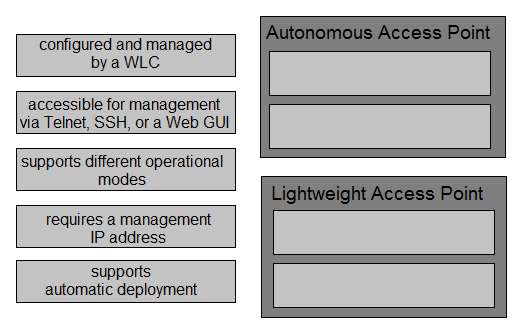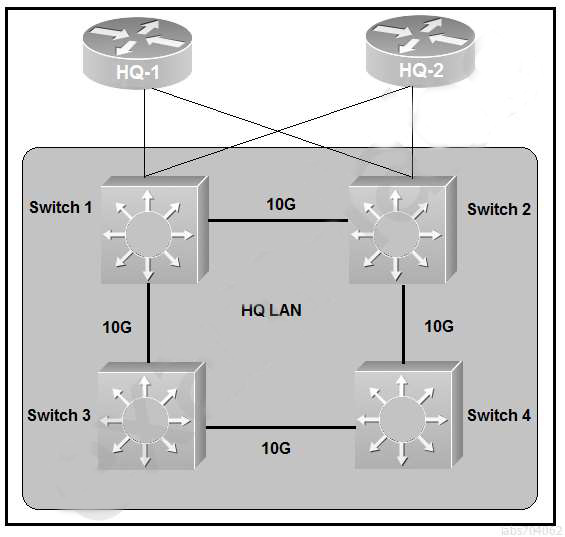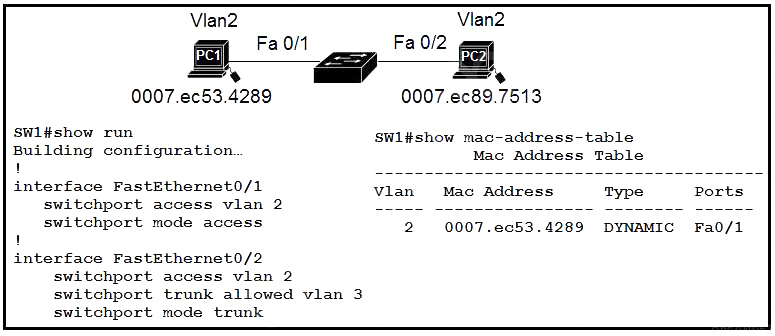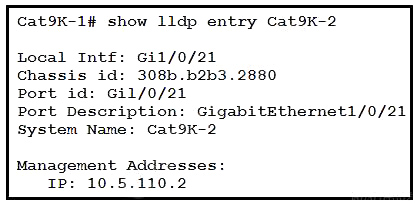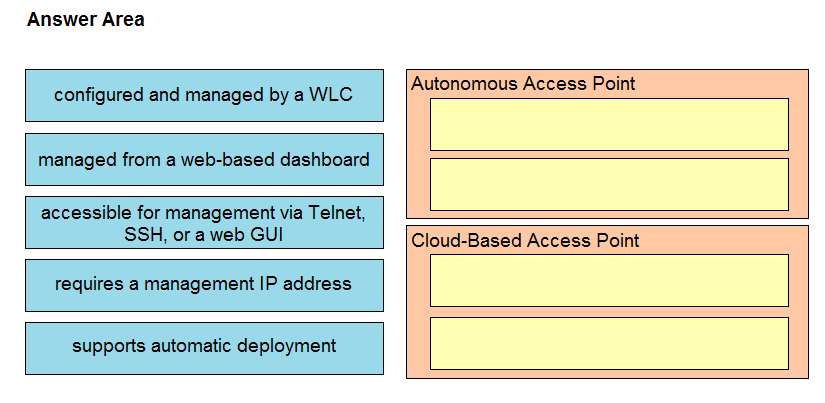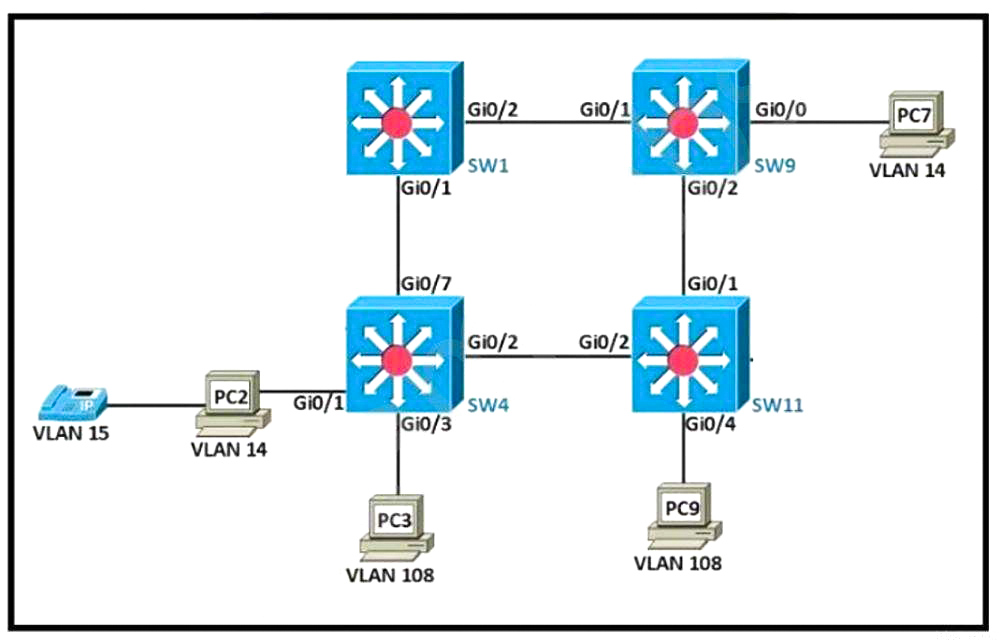
Refer to the exhibit. The following must be considered:
* SW1 is fully configured for all traffic.
* The SW4 and SW9 links to SW1 have been configured.
* The SW4 interface Gi0/1 and Gi0/0 on SW9 have been configured.
* The remaining switches have had all VLANs added to their VLAN database.
Which configuration establishes a successful ping from PC2 to PC7 without interruption to traffic flow between other PCs?
A. SW4
interface Gi0/7
switchport mode trunk
switchport trunk allowed vlan 108
!
interface Gi/0/2
switchport mode access
switchport access vlan 14
SW11#
interface Gi0/2
switchport mode trunk
switchport trunk allowed vlan 14,108
!
interface Gi0/1
switchport mode trunk
switchport trunk allowed vlan 14,108
SW9#
interface Gi0/2
switchport mode access
switchport access vlan 14
B. SW4
interface Gi0/2
switchport mode trunk
switchport trunk allowed vlan 14,108
SW11#
interface Gi0/2
switchport mode trunk
switchport trunk allowed vlan 14,108
!!
interface Gi0/1
switchport mode trunk
switchport trunk allowed vlan 14,108
SW9#
interface Gi0/2
switchport mode trunk
switchport trunk allowed vlan 14
C. SW4
interface Gi0/2
switchport mode trunk
switchport trunk allowed vlan 14
SW11#
interface Gi0/1
switchport mode trunk
switchport trunk allowed vlan 14
SW9#
interface Gi0/2
switchport mode trunk
switchport trunk allowed vlan 108
D. SW4
interface Gi/0/2
switchport mode access
switchport access vlan 14
SW11#
interface Gi0/2
switchport mode trunk
switchport trunk allowed vlan 14
!
interface Gi0/0
switchport mode access
switchport access vlan 14
!
interface Gi0/1
switchport mode trunk
SW9#
interface Gi0/2
switchport mode access
switchport access vlan 14


